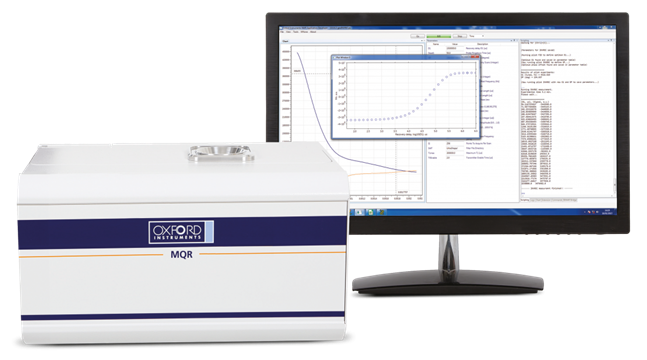The MQR is a high-performance TD-NMR system designed for applications based on relaxation and/or diffusion measurements. The system includes a high-performance digital spectrometer, a 20 MHz (0.47 T) permanent magnet, and a choice of interchangeable 10 mm, 18 mm, and 26 mm probes.
Features
- 20 MHz TD-NMR research system
- Data analysis options including 2D data sets
- High performance digital spectrometer
- Pulsed field gradients and VT probe options
- T1 and T2 diffusion measurements
- User programmable with open data environment
Benefits
- 20 MHz Operating Frequency: Provides high sensitivity and short dead times, enabling the detection of short T2 components.
- Range of Probe Sizes: Allows users to choose the optimal probe for their sample size, maximizing SNR and minimizing measuring time.
- Interactive, Real-Time User Interface: Enables users to see results as they happen and make adjustments to optimize parameters.
- Rack-Mounted Electronics Unit: Facilitates future upgrades, such as higher power RF or variable temperature probes.
- Advanced Data Analysis Software: Supports 1D or 2D data inversion for detailed analysis of phase components.
- Bipolar 1-D Pulsed Field Gradients Option: Enables high-quality measurements of diffusion and profiles.

Image Credit: Oxford Instruments Magnetic Resonance
Overview and Options
Overview
The MQR is supplied with the Application Developer software package—a fully integrated development environment that allows users to write pulse sequences, set parameters, run and debug sequences, and visualize the results. Shaped RF and gradient pulses can be included, and calculations can be embedded in the pulse sequences. An editable library of common pulse sequences is provided, along with a basic data analysis software package that includes simple curve fitting and 1D Inverse Laplace transforms
Options
Additional features available are high-strength bipolar pulsed field gradients, T1 rho capability, variable temperature probes, and advanced data analysis options, such as 2D Inverse Laplace transforms.
Related Applications
- Agriculture and Food
- Pharma